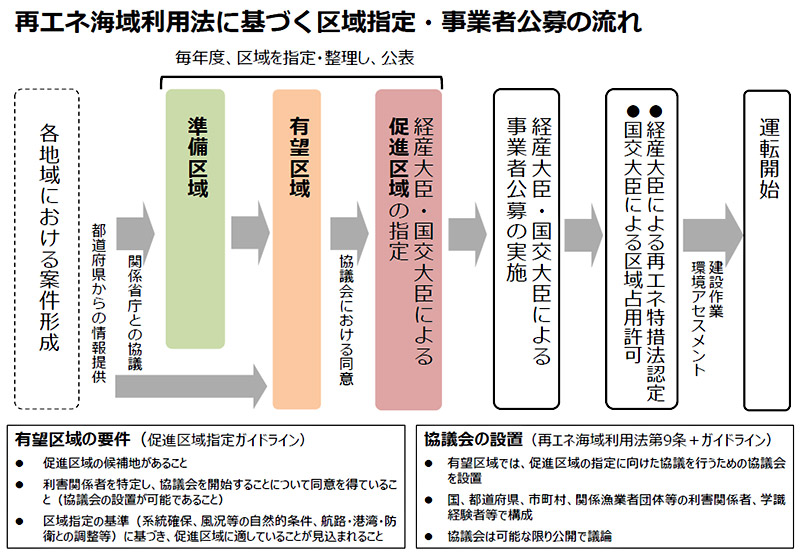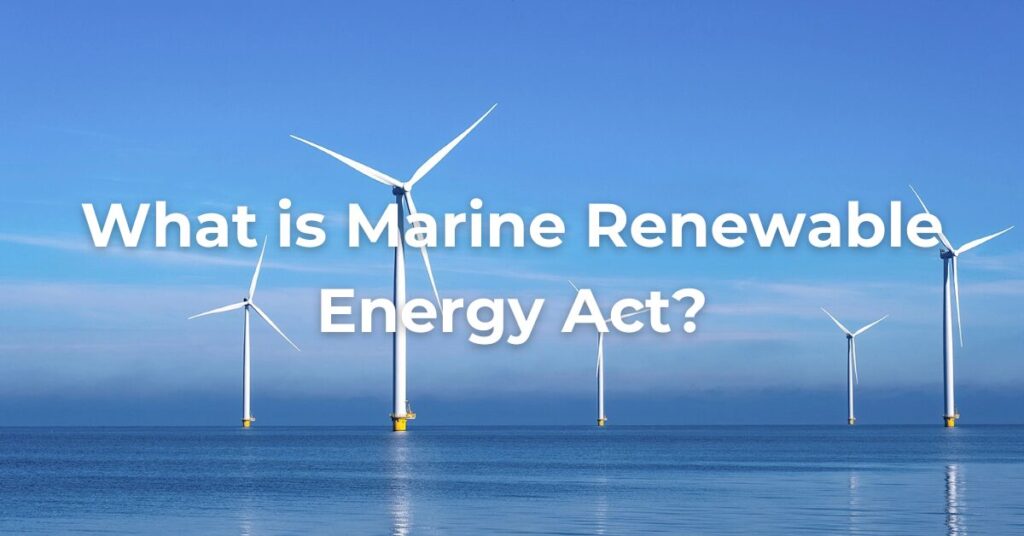Offshore wind power is gaining attention in Japan as a key pillar of its renewable energy strategy. To accelerate deployment, institutional frameworks are critical. Among these, the Act on the Promotion of the Utilization of Marine Areas for the Development of Marine Renewable Energy Power Generation Facilities—commonly referred to as the Marine Renewable Energy Act—established in 2018, plays a central role as Japan offshore wind policy. This article outlines the purpose, structure, current status, and future outlook of the law.
Background: Addressing Unclear Rules for Ocean Us
Deploying offshore wind power in Japan requires long-term use of marine spaces, a public resource. Previously, there were no unified rules governing the occupation of marine areas for power generation. Developers faced complex negotiations with existing users such as fisheries and maritime industries, leading to high project risk and uncertainty.
To resolve these barriers, the Japanese government enacted the Marine Renewable Energy Act in 2018 as Japan offshore wind policy. It provides a transparent and predictable legal framework for the commercial development of offshore wind power.
Overview of the Law: Promotion Zones and Public Bidding
Under the Act, the government can designate specific marine areas suitable for offshore wind development as Promotion Zones. These areas are selected based on the following criteria:
- Favorable wind and marine conditions
- Compatibility with existing maritime uses such as fishing and navigation
- Feasibility of connecting to the power grid
- Progress in stakeholder coordination with local governments and communities
Once designated, projects in these zones are awarded through a public bidding process, with the selected developer granted exclusive occupancy rights for up to 30 years. This long-term license allows for stable and bankable project operations.
Process of Area Designation and Developer Selection

Evaluation Criteria and Transparency in Bidding
The public bidding process does not rely solely on price competition. Instead, a range of factors are considered comprehensively, including:
- Local economic and employment contributions
- Technical feasibility and safety
- Economic efficiency and levelized cost of electricity
- Environmental considerations and impact mitigation
- Operational and maintenance capabilities
Bidding guidelines and results are made public, ensuring transparency and fairness. This helps build trust among stakeholders, including investors, local governments, and the general public.
You can find information on the 10 zones designated as Promotion Areas here.
Current Designations and Outlook
As of 2025 Jan., the Japanese government has officially designated 10 Promotion Zones, with additional “promising areas” and “preparatory areas” under review. Notable locations include the coasts of Akita, Nagasaki, and Chiba, with each area reflecting unique geographical and industrial characteristics.
Moving forward, Japan plans to continue identifying suitable zones across its exclusive economic zone (EEZ), supported by seabed surveys, stakeholder consultations, and grid planning.

Significance and Remaining Challenges
The Marine Renewable Energy Act represents a major institutional advancement in Japan’s offshore wind policy. Its key strengths include:
- Establishing a legal foundation for long-term marine area use
- Enabling private companies to make long-term investment decisions
- Ensuring social acceptance by incorporating community coordination into the process
However, some challenges remain. The process of zone designation and bidding takes time, and further streamlining is necessary. In addition, as Japan aims to expand into floating wind and larger-scale grid integration, regulatory and technical systems will need to evolve accordingly.
Conclusion
The Marine Renewable Energy Act has laid the foundation for Japan’s offshore wind expansion. Through a transparent and fair licensing system and long-term occupancy rights, it provides a reliable institutional environment for investors and developers alike. With further policy refinement and technology development, Japan is well-positioned to become a leader in the offshore wind market in Asia.
📚 Want to dive deeper? Explore J-WIND Times’ featured categories!
🔍 Market Trends & Analysis – Stay ahead with insights into the latest developments shaping renewable energy investments.
🏛 Policy & Regulation – From auction schemes to FIP reform, get a clear understanding of Japan’s evolving energy rules.
⚙️ Projects – Discover the progress and behind-the-scenes of offshore wind projects across Japan.
💡 Technology & Innovation – From next-gen turbines to floating foundations, explore the cutting edge of offshore wind tech.



